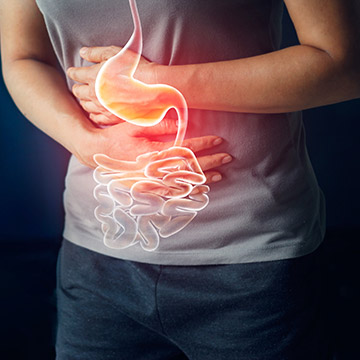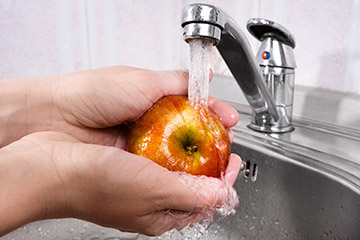What is cyclosporiasis?
Cyclosporiasis is an intestinal (bowel) infection caused by a parasite (germs), called cyclospora cayetanensis. The germs live in humans, and are most common in warm and humid countries. Countries include those in Asia, the Caribbean, and Latin America. The germs are not common in Canada.
What are the symptoms of cyclosporiasis?
- Watery diarrhea (loose poop)
- Nausea
- Loss of appetite
- Cramping and abdominal pain
- Feeling tired and unwell
- Weight loss
- Fever
Some people may not have any symptoms at all. It often takes about 1 week (up to 14 days) after the germs enter your body before you feel sick. Symptoms may come and go. If untreated, diarrhea often lasts 10 to 24 days for most healthy people. It may last for months for those with a weakened immune system (how well your body fights infections). Cyclosporiasis is linked to more long-term complications, if untreated or not treated early enough.

How does cyclosporiasis spread?
Cyclosporiasis spreads by drinking and eating contaminated water and food. It is unlikely that it spreads from person to person.
Travellers visiting countries where the germs are common and people with human immunodeficiency virus (HIV) are at a higher risk of infection.
How long is it contagious?
It does not pass directly from person to person. The germs pass through the stool (poop). Due to poor water treatment and lack of sanitation, food and water can become contaminated by stool. The germ needs days to weeks to grow and become infectious (able to make someone sick). It can remain infectious for a long time.
How is cyclosporiasis treated?
If you or your child has these symptoms, see a health care provider as soon as possible. Treatment may include antibiotics (medications that kill or stop the growth of bacteria) and supportive care to keep you hydrated.
How do I prevent the spread of cyclosporiasis?
Ways to lower your risk for infection include:
- Washing your hands often with warm water and soap, especially before and after preparing foods, before eating, and after using the washroom.
- Practicing safe food handling, including washing all uncooked fruits and vegetables in clean water, and cooking your food properly. Cook produce grown in countries where the germs are found, rather than eating it raw. Avoid preparing food if you are sick.
- Avoiding drinking untreated water. The germs are resistant to chlorine.

For more information contact the Health Unit or speak to your health care provider.
References:
American Academy of Pediatrics. (2018). Red book: 2018-2021 Report of the committee on infectious diseases (31st ed.). D.W. Kimberlin, M.T. Brady, M.A. Jackson, & S.S. Long (Eds.). Itasca, IL.
Heymann, D.L. (Ed.). (2015). Control of communicable diseases manual (20th ed.). Washington, DC: American Public Health Association.
Ontario Ministry of Health and Long-Term Care. (2014). Infectious Diseases Protocol: Appendix A – Cyclosporiasis. Toronto, ON: Queen’s Printer for Ontario.

